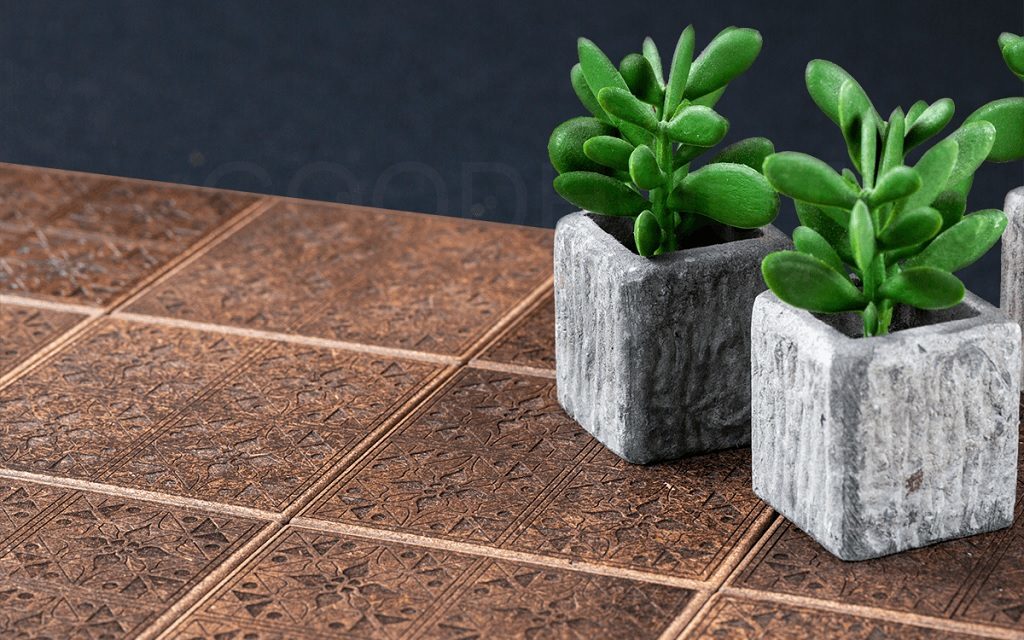The main photo is courtesy of GoodHout , a manufacturer of coconut husk wood-alternative panels based in the Netherlands.
Innovative alternative materials for the home continue to amaze us, especially where it concerns furniture design and décor and the use of “throwaway materials” that can be economically transformed.
We recently viewed a video by the government of Kerala, India that extolled the many benefits of the coconut drupe (it’s not really a nut), which is any fruit with a hard stony covering enclosing the seed – think peaches, nectarines and olives.
Ripe from the tree, coconuts are processed into edible and non-edible materials, the latter of which can be transformed into a number of household items.
Research uncovered that there are a number of companies, organizations and governments that are touting the many benefits of the coconut fruit, mainly the husk, which can be recycled into doormats, bedding, chairs, tables, wall décor, and so much more.
Table of Contents
- How Coconut Waste is Used for Furniture & Other Home Goods
- Are Coconut Trees Used for Lumber?
- Where is Coconut Coir Wood Sourced?
- How Coconut Coir is Processed
- The Many Benefits of Coconut Coir Wood
- The Many Uses of Coconut Coir Wood for the Home
- Examples of Coconut Coir Wood Products for the Home
- Recommended Coir Wood Industry Resources
How Coconut Waste is Used for Furniture & Other Home Goods
Coconuts and their by-products are a staple in many countries such as India, Philippines, Indonesia and Brazil, with these four countries being the world leaders in coconut production.
Once the coconut is cut from the tree, the fruit is split to release the inner seed – what we know in the store as the “coconut” – and the husk remains as refuse or waste product. However, the cellulose fiber or coir has been used by South Indians since ancient times for a variety of applications.
The term “coir” (pronounced “coy-ya”) is actually Malayalam – the language of the state of Kerala, India – for “cord” or “rope”. There are two types of coir – brown and white – with the former being more fibrous and strong with a high-abrasion resistance. Brown coir is often used as source material for mats, brushes, and gunny sacks, whereas the white coir has less cellulose, and is spun into flax and cotton to make fabric, due to its flexibility.
Coir is also often used in landscaping and gardening due to its ability to retain moisture and expel insects by creating a natural pest management system. Coir’s rot-resistant and termite-repellent characteristics are ideal for wood furniture, flooring and wall-cladding.
The latest innovation of coconut coir has been the production of a sustainable wood for many applications such as flooring, furniture interior décor and insulation.
Are Coconut Trees Used for Lumber?
Since the harvesting process of coconuts results in coir and husks, being waste by-products, the widespread use of such materials is cost-effective, as the husks would have otherwise ended up in landfills. The upcycling of the coir does not require chemical binders to transform them into high-quality, durable, wooden board substitutes.
During the life of a coconut tree, it would be inefficient to harvest the lumber prematurely, as coir has proven to serve the same applications as felled lumber. However, since coconut trees cease to produce fruit after 70 years, the tree lumber may also be used as a secondary source of sustainable material for home goods and interior applications.
Rather than deforesting vibrant, productive coconut trees, processors have learned that coir can be naturally processed to create an endless source of coconut wood that is strong and lasts as long as any other tree wood. The advantages are that, the coir wood is biodegradable, requires no water to process and, like tree wood, can be nailed and screwed into, while resisting some of the flaws of other woods, such as surface abrasions, flaking or dusting when used in construction.
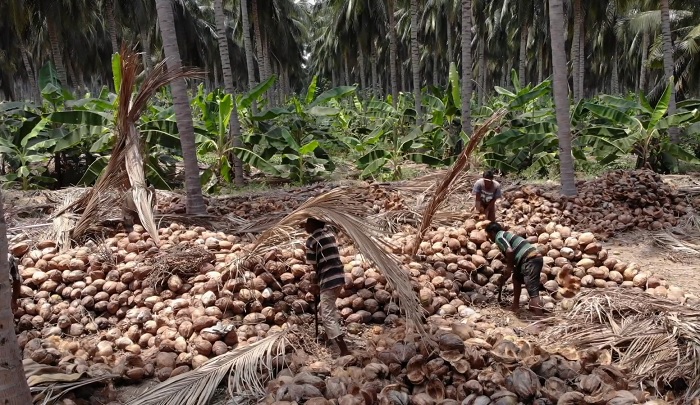
Photo courtesy of CoirWood
Where is Coconut Coir Wood Sourced?
Although Kerala, India is the largest producer of coconut coir in the world, the husk is also sourced from Sri Lanka, the Philippines, Indonesia, Vietnam, Mexico and parts of the Caribbean and South America.
With over 55% of the world coir production, India is responsible for over 5.4 Metric Tons of the source material. Naturally, the Indian government has taken an interest in developing the by-products of their coconut harvest, and thus the labor market for the plantation and factory workers, who are all vital to the success of this chief export.
How Coconut Coir is Processed
This video from Coir Board, a government agency of India, illustrates the process from tree to raw materials for various coconut coir products.
The Many Benefits of Coconut Coir Wood
- 100% Natural
- Durable
- Rot resistant
- Pest resistant, especially termite resistant
- Scratch Resistant: on par with melamine and high-density bamboo
- Renewable & Sustainable Alternative Wood Source
- No chemical fumes or by-products,
- No deforestation
- No water needed for processing
- Creates a circular economy
- Boosts the rural economy
- High Density – 2 times harder than ebony wood
- Flame Resistant: burns 3 times slower than untreated wood, with zero added, toxic flame-retardant chemicals
- Water Resistant: low moisture uptake, great for bathrooms & kitchens
The Many Uses of Coconut Coir Wood for the Home
- Furniture
- Cabinetry
- Wall Covering & Cladding
- Architectural Millwork
- Interior Design
- Finished Products
- Mattresses
- Gardening & Landscaping – great for soil erosion prevention
- Doormats & other outdoor rug & carpeting uses
- Insulation
- Scrubbing Brushes & Scouring Pads
- Drink Coasters
- Handmade Crafts
- Cocolawn, an organic grass solution
- Upholstery
Examples of Coconut Coir Wood Products for the Home
Coconut coir, once processed into various sourcing materials can be sewn, bonded, heat-treated and compressed to the form the basis for various home products. Coconut-based materials are becoming a chic furnishing alternative due to the many benefits and characteristics of coir. Designers are now starting to incorporate coir products into home furnishings, clothing, and footwear, as a result of the economic and readily available source materials in markets with skilled coir processors.
By far the most popular and accessible product category for coconut coir in the United States is doormats.
Coir is uniquely suited to handle the wear and tear of heavy outdoor foot traffic in all types of weather and climates. Coir matting is highly flexible for manufacturers to offer a wide-range of doormat variations that are durable, stylish, customizable, and fairly priced. For the longest lasting coir doormat you will want to choose a thickness of one inch or more. Coir mats can last from 6 to 10 years depending on usage and the local environment.
Decorative Home Entry Welcome Mat from FabulousMatsAndMore on Etsy
- Hand-Made, Coir Brush Doormat – “Two Tone Beige”
- 8″ x 30″ & 1-1/2″ Thick
- 100% Natural Materials
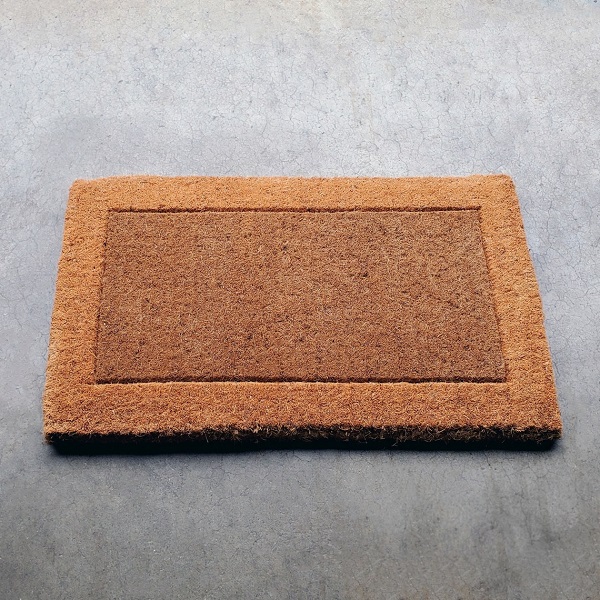
Estate Monogrammed Coco Door Mat from Frontgate
- Elegant, yet highly durable, heavy duty doormat.
- 3 sizes to choose: 24”x39”; 30”x48”; 36”x72”
- Mat thickness: 2″
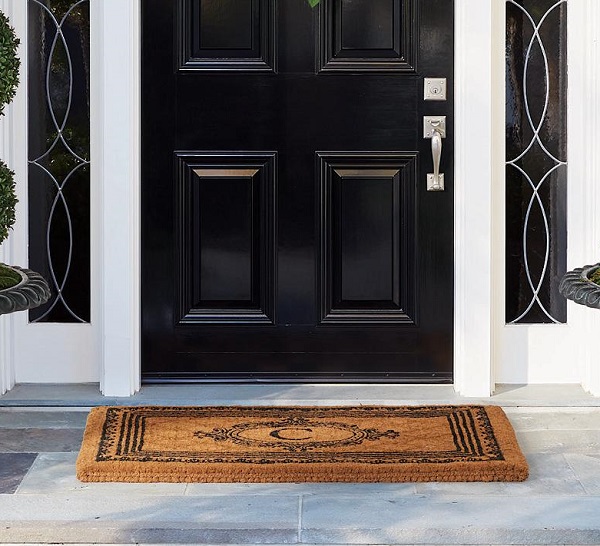
Coirpad Coconut Coir Mattress Pad Bed Rug from The Futon Shop
This one inch think coconut coir bed pad allows air circulation between the bottom of a mattress and a platform bed’s surface. This is an ideal solution for fostering a cooler sleep surface, as well as prohibiting the growth of mildew.
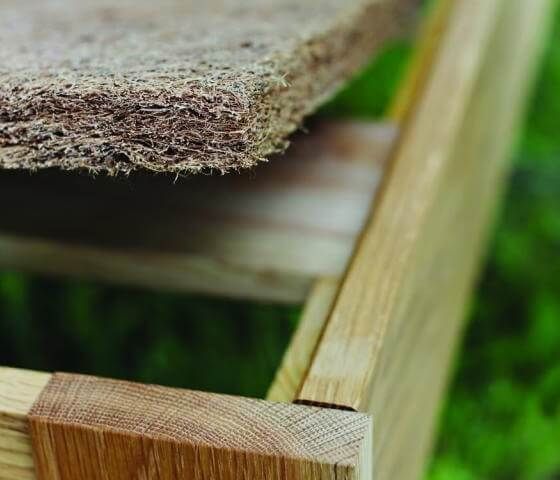
White Coconut Shell Two Tier Alana Pendant Lamp from World Market
This pendant lamp, handcrafted by Filipino artisans, showcases two tiers of white round coconut shells that glow warmly when illuminated.
- Overall: 18″ diameter x 12″ height, 6 lbs.
- Canopy: 4.5″ diameter
- Drop Length: 3’
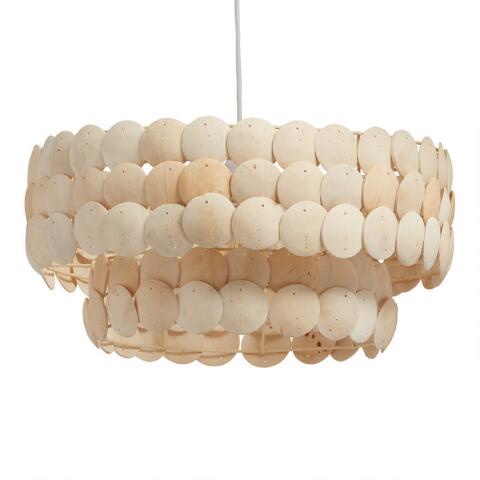
Multi-use Coconut Brush from YourGreenLife on Etsy
Sustainable, 100% natural and multipurpose brush that can be used for cleaning bottles, dishes, pans or for bathroom cleaning.
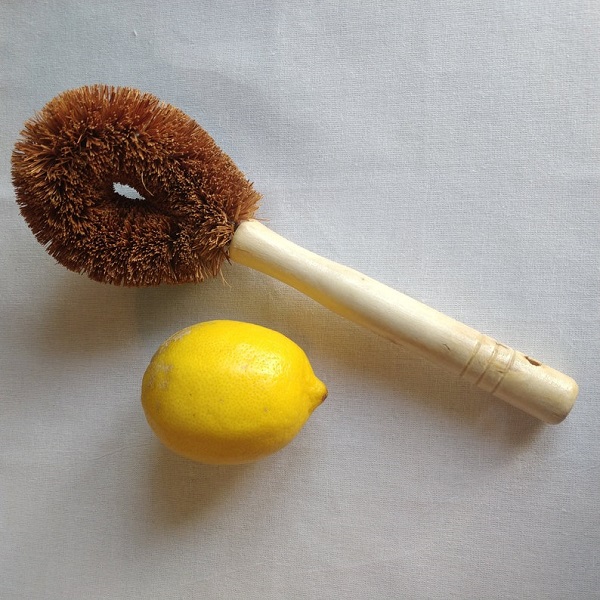
Cracked Coconut Shell Coffee Table from Andrianna Shamaris
A bespoke coffee table made of laminated cracked coconut shell with black stained minimal wood frame. The table top resembles leather.
- Dimension: 48” long x 31.5” wide x 18 high x 2.5” top thickness
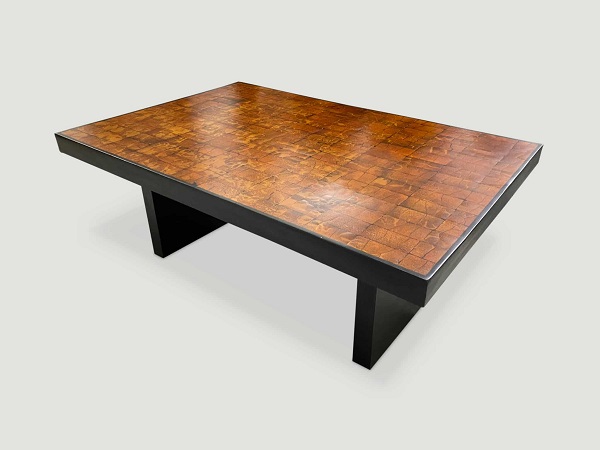
Coconut Coir Wood Furniture Concept by Trupti Mehta
This is a concept coir wood furniture set designed by Mumbai-based industrial designer Trupti Mehta. Her goal was to create various concepts for the new material of coir composite panels. Designers like Trupti are experimenting with coir wood panels due to its favorable traits of being waterproof, termite-proof and easy to use for manufacturing.
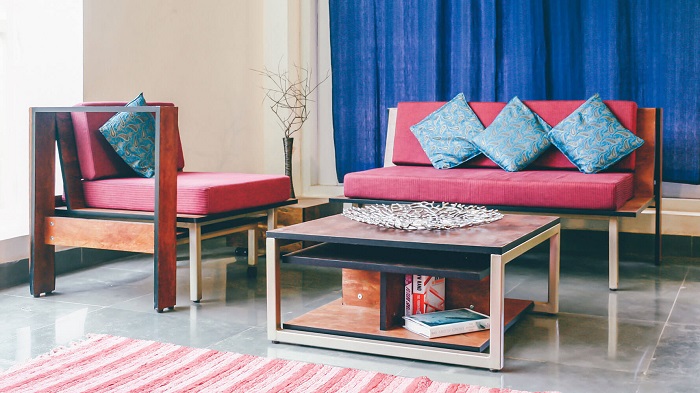
East at Main Mila Accent Table
This striking mosiac-patterned square end table from East at Main is crafted by hand with individual pieces of coconut shell. The piece is durable, yet conveniently lightweight to be moved easily when needed.
- Dimensions: Width: 17″ x Depth 17″ x Height 19″
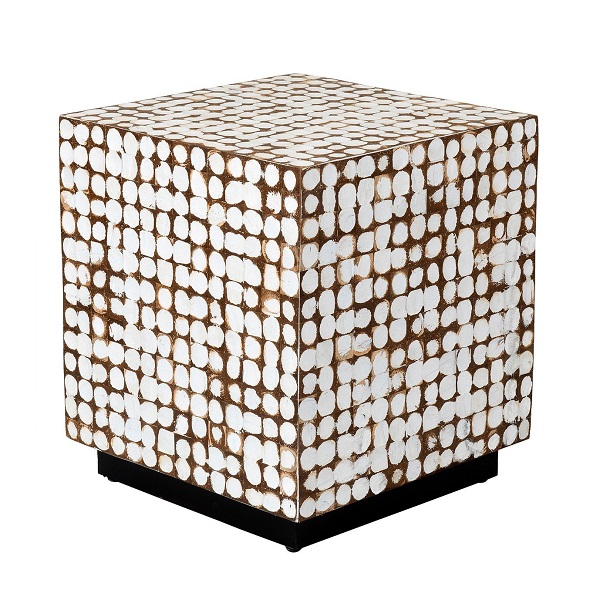
Kirei Reclaimed Coconut Shell Tiles
Kirei, a leader in acoustic design elements, has been a producer of easy-to-install, reclaimed coconut shell tiles for several years, called Kirei Coco Tiles. These eco-friendly tiles have been popular for wall covering, furniture and interior design feature elements.
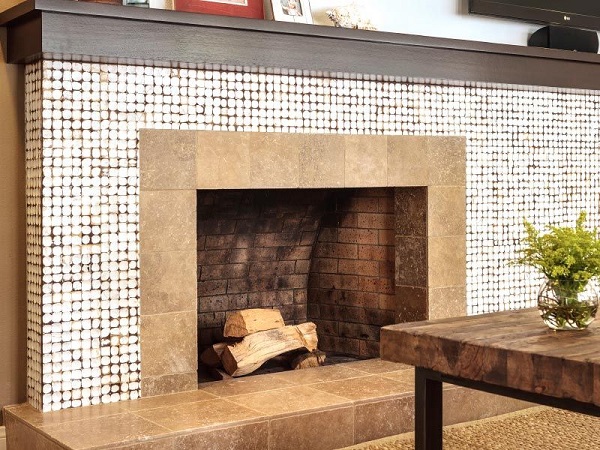
GoodHout’s Wood Alternative Solution – Coconut Husk Panel
Based in the Netherlands, GoodHout is a new venture that is planning to disrupt the furniture and interior design industries with its brand of coconut husk composite board. With patent-pending process, the company is currently seeking partnerships to launch their proprietary solution that will replace thermoset plastics and tropical hardwoods. They are promoting their future product line as: “the new wood—sustainably-sourced from coconuts.”
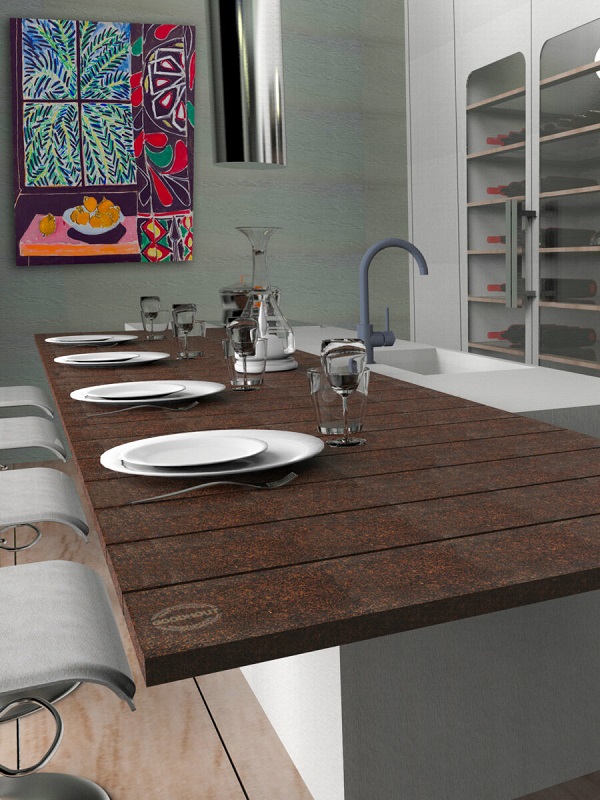
Recommended Coir Wood Industry Resources
| Purgula is reader-supported. When you click on links to other sites from our website, we may earn affiliate commissions, at no cost to you. If you find our content to be helpful, this is an easy way for you to support our mission. Thanks! Learn more. |

